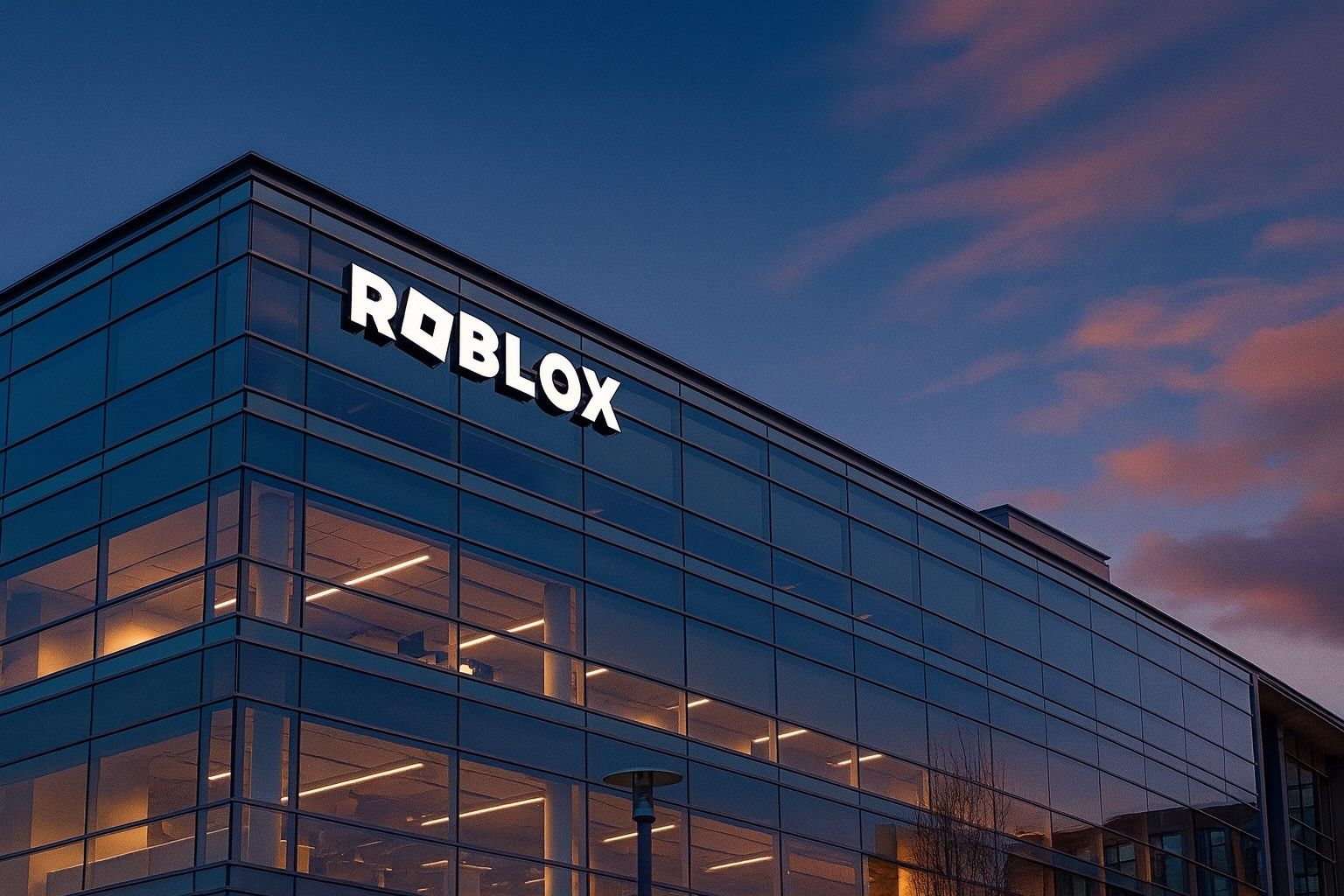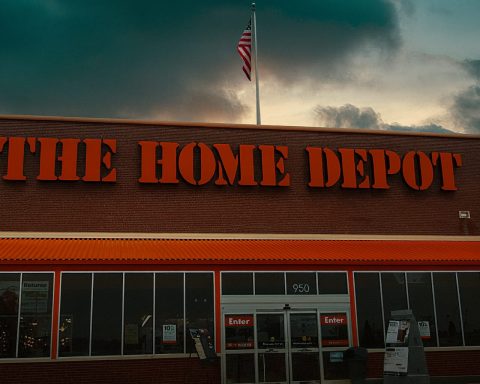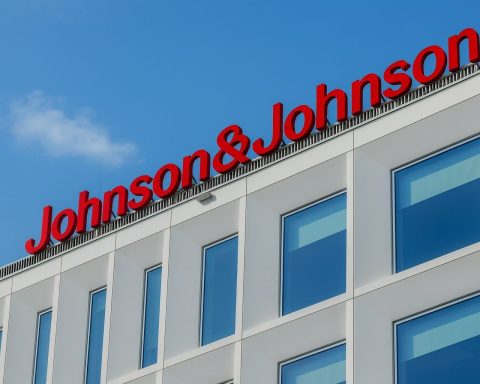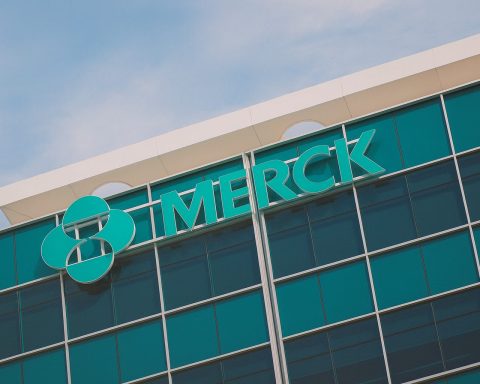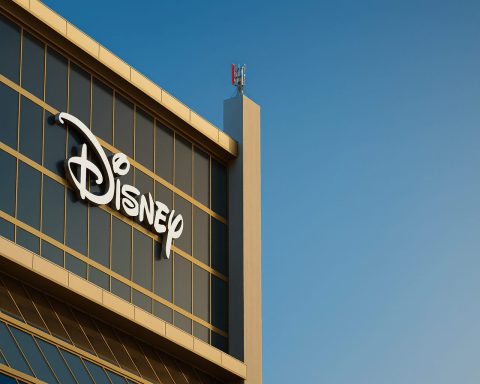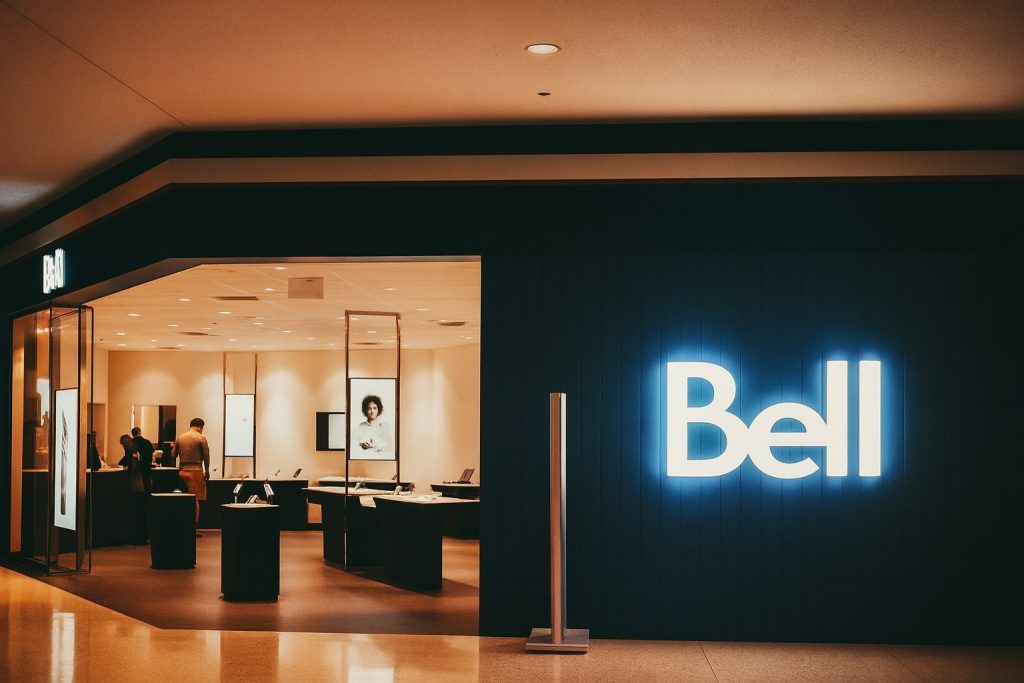- Massive Rally: Roblox Corporation’s stock (NYSE: RBLX) is trading around $128 as of October 14, 2025 – up over 200% in the past year amid a broader tech rally [1]. The metaverse gaming platform has been one of 2025’s top performers, far outpacing the Nasdaq’s gains.
- Analysts Boost Targets: A wave of Wall Street analysts have raised their price targets. Jefferies bumped its target to $130 (Hold) [2] and JPMorgan to $160 (Overweight) after seeing stronger-than-expected bookings growth (~50%+ YoY in Q3 vs. ~47% guided) and record user engagement (~43 million concurrent users in August) [3] [4].
- Bull Case to $300: Morgan Stanley initiated coverage with an Overweight (Buy) rating and a $170 base target – and even posited a bull-case scenario of $300 per share. The firm expects Roblox’s booming user base (already ~400 million monthly users) to surpass 1 billion by 2030, potentially making Roblox a “dominant platform” in the space [5] [6].
- Widespread Optimism: Other banks echo the upbeat outlook. BMO Capital now targets $160 (Outperform) and Piper Sandler sees $180 [7]. MoffettNathanson upgraded RBLX from Sell to Neutral, citing “explosive growth in user metrics” driven by viral experiences on the platform [8]. While TD Cowen still rates Roblox a Sell, even it admitted its estimates “might be too conservative” given recent trends [9]. Credit agencies are also warming up – Moody’s raised Roblox’s outlook to Positive (Ba1 rating) thanks to improving usage and revenue growth [10].
- Surging Growth Metrics: Roblox’s bookings are soaring (analysts estimate 50–57% YoY for Q3 2025, well above guidance) [11]. User engagement hit all-time highs, with one breakout game push leading to 43 million simultaneous players in late August [12]. Such momentum suggests Roblox could beat its Q3 targets; JPMorgan sees “healthy upside” to management’s guidance [13].
- Valuation & Risks: Despite the euphoria, some experts urge caution. After a 200% run, Roblox trades at elevated revenue multiples and is still unprofitable [14]. Jefferies questions whether 20%+ bookings growth is sustainable long-term [15] given tougher comparisons in 2026. A quantitative screen (Validea’s P/B Growth model) gives RBLX a modest 55% score, indicating only “moderate interest” with several fundamental metrics (e.g. Return on Assets) failing to pass muster [16].
- Competitive Landscape: Rivals are eyeing Roblox’s turf – for instance, Epic Games (maker of Fortnite) announced plans for user-created content and item sales. However, analysts note this “doesn’t seem like it will have a negative effect” on Roblox’s platform – it’s more of a bonus for Fortnite’s ecosystem [17]. So far, investors “aren’t overly worried” about the competition, as Roblox’s stock continues to hover near highs [18].
Roblox’s Meteoric Rise in 2025
Roblox’s share price has exploded in 2025, reflecting renewed enthusiasm for the company’s “metaverse” gaming platform and a surge in tech stocks generally. As of mid-October, RBLX trades around $128, having delivered an astounding 214% return over the past year [19]. For context, the S&P 500 and Nasdaq are up only modestly this year, making Roblox a standout gainer. The company – which operates a massively popular user-generated gaming universe – has ridden a wave of improving metrics and investor optimism. Roblox now boasts over 400 million monthly active users, roughly twice the combined user bases of Sony’s PlayStation, Microsoft’s Xbox, and Nintendo’s Switch [20]. This immense scale underscores why many see Roblox as a core platform in the future of interactive entertainment.
Crucially, Roblox’s growth narrative has reaccelerated. After some slowdown in prior years, the company’s bookings (sales of its virtual currency and subscriptions) are soaring again – management projected about +47% year-over-year bookings growth for Q3 2025, but even that may prove conservative. The summer brought an explosion of engagement on Roblox: viral new games (e.g. “Grow a Garden” and “Steal a Brainrot”) attracted so many players that concurrent users hit 43 million in late August, shattering Roblox’s previous usage record of ~32 million [21]. This unprecedented user activity drove revenues sharply higher. In fact, JPMorgan analysts expect Roblox’s Q3 bookings to jump ~51% YoY, well above company guidance, thanks to the “healthy upside” from the August traffic boom [22]. Jefferies is even more bullish on Q3, forecasting +57% YoY bookings growth – a sign that Roblox’s momentum in late Q3 was stronger than anyone anticipated [23].
The market has taken notice. Roblox’s stock price has essentially tripled in a year, reflecting both these improved fundamentals and broad investor appetite for growth tech names. CEO David Baszucki’s ambitious vision – that eventually “10% of all global gaming content revenue” will flow through Roblox’s creator economy [24] – no longer sounds far-fetched given the platform’s trajectory. In the 12 months through June 2025 alone, Roblox paid out over $1 billion to its community developers [25]. By investing in new tools (like generative AI features to help creators build games faster) and expanding its reach across age groups and geographies, Roblox is aggressively positioning itself to maintain this breakneck growth.
Wall Street Bulls Raise the Stakes
Wall Street analysts have piled on with upgrades and higher price targets for RBLX in recent days, reflecting growing confidence in Roblox’s prospects. The most dramatic endorsement came from Morgan Stanley, which initiated Roblox with an Overweight (Buy) rating and a $170 price target. Analyst Matthew Cost argues Roblox is on a YouTube-like growth path – highlighting that the platform’s user count has expanded 10x since 2018 and could “surpass one billion” monthly users by 2030 [26]. Morgan Stanley sees Roblox as still early in penetrating its core audience (only ~3% of 5-to-34-year-olds worldwide are on Roblox so far [27]), leaving a massive runway. The firm’s base case implies about 33% upside, but notably its bull-case scenario envisions Roblox stock reaching $300 in the coming years [28]. That extremely optimistic view hinges on Roblox solidifying its dominance as the de facto metaverse platform – a “dominant platform” for immersive content creation and play [29] – with sustained ~20% annual bookings growth and ~30% annual EBITDA growth through 2030 [30].
Other analysts are only slightly less enthusiastic. JPMorgan recently upgraded Roblox to Overweight and upped its target price from $150 to $160 [31], citing the company’s record engagement and accelerating bookings. The JPMorgan team reconstructed their model after seeing the Q3 usage spike and now expects “healthy upside” to Roblox’s guidance, raising their estimates for both Q3 (to +51% bookings growth YoY) and Q4 (+44% YoY) [32]. In a research note, JPMorgan highlighted Roblox’s hit games and user momentum as key drivers, and concluded that the strong Q3 metrics should translate into earnings beats.
Meanwhile, Jefferies has maintained a more cautious Hold rating, but even they lifted Roblox’s target from $126 to $130 on October 14, acknowledging the company’s surprisingly robust Q3 performance [33]. Jefferies analysts noted that many bulls are now looking for 60%+ bookings growth to justify further share appreciation [34] – an indication of just how high expectations have become. They also pointed out that September and early October engagement dipped slightly from August’s peak (largely due to back-to-school seasonality), suggesting the Q3 boom may moderate in Q4 [35]. Still, Jefferies raised its FY2026 EBITDA forecast for Roblox by 4% (to ~$1.95 billion) and believes the company can sustain ~20% bookings growth longer-term – though this is a key debate (more on that later).
Beyond those, a chorus of firms have issued positive revisions:
- BMO Capital bumped its RBLX target to $160 and reiterated an Outperform rating, citing exceptionally strong user engagement metrics driving the business [36].
- Piper Sandler went even higher, increasing its target to $180, as analysts were impressed by Roblox’s ability to turn viral content into sustained user growth and saw this as validation of the platform’s long-term potential [37].
- MoffettNathanson made a notable reversal, upgrading Roblox from Sell to Neutral. The firm had been bearish, but the recent numbers forced a rethink – they acknowledged “explosive growth in user metrics” thanks to hit experiences on Roblox, which alleviated some of their earlier concerns [38].
- Even the bears are softening: TD Cowen kept its Underperform (Sell) stance, yet admitted its current forecasts “might be too conservative” given the blowout engagement data seen in Q3 [39]. In other words, Roblox’s performance is beating even the skeptics’ expectations.
- Outside of equity research, Moody’s Investors Service upgraded Roblox’s credit outlook to Positive (while affirming its Ba1 junk rating) as the company’s cash flow profile improves. Moody’s cited Roblox’s “improving credit profile and robust growth in users and bookings” for the outlook boost [40], signaling increasing confidence that Roblox can manage its finances and potentially reach profitability in the future.
All told, the consensus on Wall Street is bullish. According to recent surveys, RBLX carries a Moderate Buy consensus with roughly 18 Buy ratings vs. only 1 Sell, and the average price target around $150–$155 implies further upside from current levels [41] [42]. That said, the range of views is wide – some analysts’ targets are as low as ~$65, while the high end stretches to $180+ [43]. This spread reflects lingering debates about valuation and execution, even as sentiment has clearly improved.
Growth Drivers: Bookings Bonanza and Engagement Records
What’s behind Roblox’s dramatic resurgence? In a word: growth. The company is once again delivering the kind of exponential growth that dazzles investors. Key metrics in the latter half of 2025 have been nothing short of eye-popping:
- User Engagement: Roblox’s platform activity hit unprecedented levels in Q3 2025. Thanks to fresh content and features, Roblox saw 43 million concurrent users at peak – roughly one-third of its daily active users online at once – during a content spike in late August [44]. Average daily active users (DAUs) have also trended at record highs (Roblox had 65.5 million DAUs in August, per company disclosures, up significantly year-on-year). The momentum came from hit user-created experiences that went viral on social media, drawing in millions of players within weeks. This kind of organic virality in Roblox’s ecosystem underscores the platform’s network effects: compelling new games can spread like wildfire across its massive user base, driving engagement (and spending) to new heights.
- Monetization & Bookings: With engagement surging, bookings (a non-GAAP measure of virtual currency sales that future revenue will be recognized from) have accelerated sharply. Roblox had guided to ~47% YoY bookings growth for Q3, but analysts now expect 50–60% growth after seeing the September data [45]. Both Jefferies (57%) and JPMorgan (51%) foresee Roblox handily beating its own forecast [46] [47]. These would be Roblox’s highest growth rates since its first-year post-IPO, marking a stark turnaround from the mid-teens growth slump it experienced in 2022–2023. The likely drivers include a mix of more users, higher average spend per user (helped by new premium subscriptions and extra content), and foreign currency tailwinds (Roblox has a growing international user base). The bottom line: Roblox’s Q3 and Q4 revenues are on track to set new records, which is fueling the bullish outlook. We will get official results when Roblox reports Q3 earnings in a few weeks – investors will be watching closely to see if the company confirms the ~50%+ bookings surge that analysts are projecting.
- Platform Expansion: Underlying these numbers is Roblox’s continuous expansion of its platform capabilities and audience. The company has been pushing into older demographics beyond its core teen/pre-teen user group, with some success (the fastest-growing cohort in 2025 has been 17-24 year-olds, according to company reports). At the same time, Roblox is rolling out new features that enhance both creator and user experience – for example, at its annual Roblox Developers Conference (RDC 2025) in September, the company unveiled a suite of AI-powered creation tools and monetization options [48]. These include generative AI for more interactive 3D objects, real-time voice translation in games, and new avenues for developers to earn money. All these innovations aim to attract more content creators and keep players engaged longer [49]. As Roblox gives developers better tools to build high-quality experiences (and more ways to profit from them), it strengthens the content pipeline that keeps users coming back. CEO Baszucki has explicitly stated the goal of making Roblox the go-to platform for game creators, projecting that eventually 10% of all gaming content revenue could flow through Roblox’s ecosystem [50]. With creators already earning over $1B annually on Roblox [51], that goal doesn’t seem outlandish – and achieving it would mean many years of double-digit growth still ahead.
- Emerging Opportunities: Beyond gaming, Roblox is exploring new verticals such as education, virtual concerts/events, and brand partnerships (e.g. interactive marketing experiences). These initiatives have started contributing to user growth and could open up additional revenue streams (for instance, developers can collaborate with major brands to create sponsored content). Roblox’s management often describes the platform not just as a game but as a social utility for the metaverse generation – a place where young people hang out, attend virtual parties, learn coding, and more. This broad usage is another factor driving high engagement and potentially diversifying Roblox’s business over time.
In short, Roblox’s recent performance is the product of both cyclical and structural gains – a post-pandemic re-acceleration in its core metrics, and ongoing improvements to the platform that widen its appeal. The combination has created a powerful growth story that Wall Street has eagerly bought into.
Challenges and Caveats: Valuation, Competition, and Sustainability
Amid all the excitement, it’s important to note that Roblox’s stock is no longer cheap or risk-free. The phenomenal rally of 2025 has pushed its valuation to lofty levels, and there are potential headwinds on the horizon. Here are some key concerns experts and analysts have flagged:
- Steep Valuation: After more than tripling in a year, Roblox is priced for perfection. The stock’s forward multiples are high by any standard – for example, Investing.com data shows RBLX carries an extremely rich revenue multiple, reflecting a lot of growth already baked in [52]. At ~$128/share, Roblox’s market capitalization is roughly $75+ billion, despite the company still generating negative net earnings (Roblox has been reinvesting heavily and only occasionally achieves positive EBITDA). This means the stock is trading on future potential rather than current profitability. Jefferies noted this explicitly, warning that Roblox’s valuation is “elevated” and that the stock’s sharp volatility could continue [53]. If Roblox’s growth even slightly disappoints expectations, the high valuation leaves it vulnerable to a pullback. Some independent analysts have also run discounted cash flow (DCF) models suggesting Roblox’s shares may be ahead of fundamentals by ~20% or more under reasonable assumptions (i.e. arguably overvalued at current prices). In essence, investors are paying a premium for Roblox’s growth – which heightens the pressure on the company to deliver that growth consistently.
- Sustainability of Growth: The central question – raised by bulls and bears alike – is how long can Roblox sustain these hyper-growth rates? 2025’s 50%-plus bookings jumps are partly a rebound from earlier slowdowns and easy comparisons. By 2026, Roblox will be lapping this year’s high numbers, making it inherently harder to keep growing at 20–30% annually. Jefferies analysts openly questioned whether Roblox can maintain 20%+ bookings growth over the long term or if it will decelerate to more normal levels once the current content super-cycle eases [54]. They point out that 2026 will bring “increasingly difficult” comparisons [55]. If growth falls back to, say, 10-15% per year after 2025, the current valuation would look much less reasonable. Roblox’s management hasn’t issued 2026 guidance yet, but this will be a closely watched topic in upcoming quarters. The company will need to find new growth drivers (international markets, older users, new monetization) to avoid a sharp slowdown. Validea’s quantitative models underscore that Roblox’s fundamentals, while solid on growth, show some weaknesses on traditional metrics: their Partha Mohanram P/B Growth model gives RBLX a 55% score – merely moderate, not outstanding [56]. The model flagged poor returns on assets and cash flow metrics (FAIL scores) even as it acknowledged Roblox’s high growth (some PASS scores) [57]. This mixed picture suggests that Roblox’s growth thesis comes with “meaningful caveats” about efficiency and profitability [58]. In other words, Roblox is growing fast but still figuring out how to translate that growth into strong, consistent earnings.
- Competitive Threats: Roblox essentially pioneered the user-generated gaming platform space, but it’s no longer alone. Tech giants and game studios have noticed its success and are moving in. Most notably, Epic Games – maker of the hit Fortnite – is launching its own user-created content marketplace within Fortnite. Starting in late 2025, Fortnite players will be able to design and sell custom items and experiences, with Epic even offering a generous 100% revenue share to creators through 2026 to jump-start the ecosystem [59] [60]. This strategy directly mimics Roblox’s business model of community-built content and monetization [61]. Epic’s Fortnite has a massive global player base, so its foray into user-generated content (UGC) could theoretically draw some creators and players away from Roblox. However, analysts so far are not sounding alarm bells about this threat. The types of games and audiences on Fortnite vs. Roblox differ significantly (Fortnite skews older and is a more shooter-style game), which limits the direct overlap. As TipRanks noted, “considering the different types of games that Fortnite and Roblox are, this move doesn’t seem like it will have a negative effect on Roblox’s platform. Instead, it seems more like an added bonus for [Fortnite] players” [62]. In essence, Epic is expanding into UGC, but that may grow the overall market more than it steals from Roblox. So far, Roblox investors appear unconcerned – after Epic’s announcement, RBLX stock barely budged (even ticking up 0.2% that day), indicating the market “aren’t overly worried about Fortnite’s user-created content plans,” as one report put it [63]. Nonetheless, competition bears watching. Other platforms like Minecraft, Core, and Meta’s Horizon Worlds are also vying to attract creators and gamers. Roblox’s challenge will be to continue innovating and retaining its developer community in the face of these alternatives. Its strategy of paying developers over $1B a year and offering cutting-edge creation tools (including AI) is aimed at keeping Roblox’s creator economy the most attractive in the industry.
- Regulatory and Platform Risks: Another consideration is the regulatory environment and platform safety. Roblox primarily caters to children and teens, which has put it under scrutiny regarding content moderation, safety, and privacy. The company has invested in safety features and age verification, but any high-profile incident or regulatory action (for example, if governments impose stricter rules on online gaming for minors, as seen in some countries) could impact Roblox’s growth or costs. Additionally, Roblox relies on third-party app stores (like Apple’s and Google’s) for distribution on mobile; changes in app store policies or fees can affect Roblox (though the company did win a partial fee reduction in a recent policy update from Apple that benefits metaverse apps). These are longer-term risks that investors keep in mind even if they haven’t materially affected the stock yet.
In summary, Roblox faces the classic high-growth conundrum – it must keep executing flawlessly to justify its valuation. The consensus is that Roblox has a bright future, but it’s not without competition or challenges. As one analyst quipped, Roblox’s story is a “growth thesis with meaningful caveats” [64]. How the company navigates the post-pandemic normalization, rising competition, and the road to profitability will determine if RBLX can sustain its stratospheric climb or if it might hit turbulence.
Outlook: High Expectations for the Metaverse Leader
Looking ahead, Roblox’s trajectory will likely be defined by whether it can maintain momentum into 2026 and beyond. Near-term, all eyes are on the Q3 2025 earnings report, due in early November. Given the extraordinary Q3 engagement numbers, investors will expect Roblox to beat its guidance and perhaps raise its outlook for Q4. Any commentary on the upcoming holiday season (typically a strong period for user activity and spending on the platform) will be parsed closely. If Roblox confirms ~50%+ bookings growth in Q3 and guides to robust growth in Q4, it could further validate the recent analyst optimism. Conversely, if there are any signs of slowdown or cautious management tone, the stock could see a pullback after its huge run-up.
Longer-term, Wall Street generally agrees that Roblox has firmly re-established itself as a top-tier growth company. The consensus model envisions continued expansion, though at a decelerating pace. For instance, Morgan Stanley’s base case forecasts ~20% compound annual bookings growth and ~30% EBITDA growth over the next five years [65] – impressive, though lower than the 2025 spike. Achieving even those targets would make Roblox one of the fastest-growing large-cap tech names, and could indeed justify further stock gains (if not all the way to the $300 bull-case extreme). The company’s fundamentals (high gross margins, improving cash flow, and a massive deferred revenue balance from bookings) suggest that as growth eventually normalizes, profitability will kick in. Roblox has indicated that once it stops aggressively expanding headcount and R&D, the business has potential to generate significant free cash flow at scale.
The broader theme of the “metaverse” and UGC (user-generated content) remains a tailwind for Roblox. In an era where tech giants are investing in virtual worlds and immersive platforms, Roblox is often cited as one of the few proven winners in the space – essentially, it already built a thriving metaverse long before the term was buzzworthy. This has attracted strategic partnerships (music labels hosting virtual concerts on Roblox, fashion brands selling virtual merchandise, etc.) that could further boost engagement and monetization. If Roblox can maintain its cultural relevance with Gen Z and Gen Alpha users while also attracting older users, it stands to benefit from network effects and the flywheel of more users → more creators → more content → more users.
That said, investors should brace for volatility. After such a steep ascent, Roblox’s stock may not climb in a straight line. News on interest rates, tech stock rotations, or any hiccup in Roblox’s metrics could cause outsized moves. But for now, the sentiment is decidedly positive. “Roblox’s stock is on the rise”, noted TipRanks after the recent analyst moves, “attributable to accelerated audience traction from popular experiences” [66]. The company’s ability to consistently delight its community – and convert that into revenue – has won back Wall Street’s confidence.
In conclusion, Roblox Corporation enters late 2025 as a rejuvenated growth star. The stock’s stunning 200% surge over the past year reflects both the company’s internal wins (more users, more bookings, innovative features) and a renewed belief that Roblox could be a long-term winner in the interactive media landscape. With price targets now clustered in the $150–$180 range and even bullish whispers of $200+ down the road, expectations are unquestionably high. Whether Roblox ultimately “hits $300” in the future will depend on executing on its grand vision – expanding to a billion users, pioneering the metaverse, and capturing a sizable share of the gaming economy. For investors and fans alike, Roblox’s journey will be one of the most closely watched stories in tech. As of today, the consensus among experts is that Roblox has more room to run, but the next chapters will be crucial in determining just how far this virtual world can go in the real market.
Sources: Roblox analyst reports and news on Jefferies, Morgan Stanley, JPMorgan, etc. [67] [68] [69] [70] [71]; TS² TechStock daily market summary [72]; Roblox press releases and conference updates [73]; TipRanks and Investing.com stock analysis [74] [75].
References
1. www.investing.com, 2. www.investing.com, 3. www.tipranks.com, 4. www.investing.com, 5. www.tipranks.com, 6. www.tipranks.com, 7. www.investing.com, 8. www.investing.com, 9. www.investing.com, 10. www.investing.com, 11. www.investing.com, 12. www.tipranks.com, 13. www.tipranks.com, 14. www.investing.com, 15. www.investing.com, 16. ts2.tech, 17. www.tipranks.com, 18. www.tipranks.com, 19. www.investing.com, 20. www.tipranks.com, 21. www.tipranks.com, 22. www.tipranks.com, 23. www.investing.com, 24. ir.roblox.com, 25. ir.roblox.com, 26. www.tipranks.com, 27. www.tipranks.com, 28. www.tipranks.com, 29. www.tipranks.com, 30. www.tipranks.com, 31. www.tipranks.com, 32. www.tipranks.com, 33. www.investing.com, 34. www.investing.com, 35. www.investing.com, 36. www.investing.com, 37. www.investing.com, 38. www.investing.com, 39. www.investing.com, 40. www.investing.com, 41. www.tipranks.com, 42. www.tipranks.com, 43. www.investing.com, 44. www.tipranks.com, 45. www.investing.com, 46. www.investing.com, 47. www.tipranks.com, 48. ir.roblox.com, 49. ir.roblox.com, 50. ir.roblox.com, 51. ir.roblox.com, 52. www.investing.com, 53. www.investing.com, 54. www.investing.com, 55. www.investing.com, 56. ts2.tech, 57. ts2.tech, 58. ts2.tech, 59. www.tipranks.com, 60. www.tipranks.com, 61. www.tipranks.com, 62. www.tipranks.com, 63. www.tipranks.com, 64. ts2.tech, 65. www.tipranks.com, 66. www.investing.com, 67. www.investing.com, 68. www.tipranks.com, 69. www.tipranks.com, 70. www.investing.com, 71. www.tipranks.com, 72. ts2.tech, 73. ir.roblox.com, 74. www.investing.com, 75. www.tipranks.com
